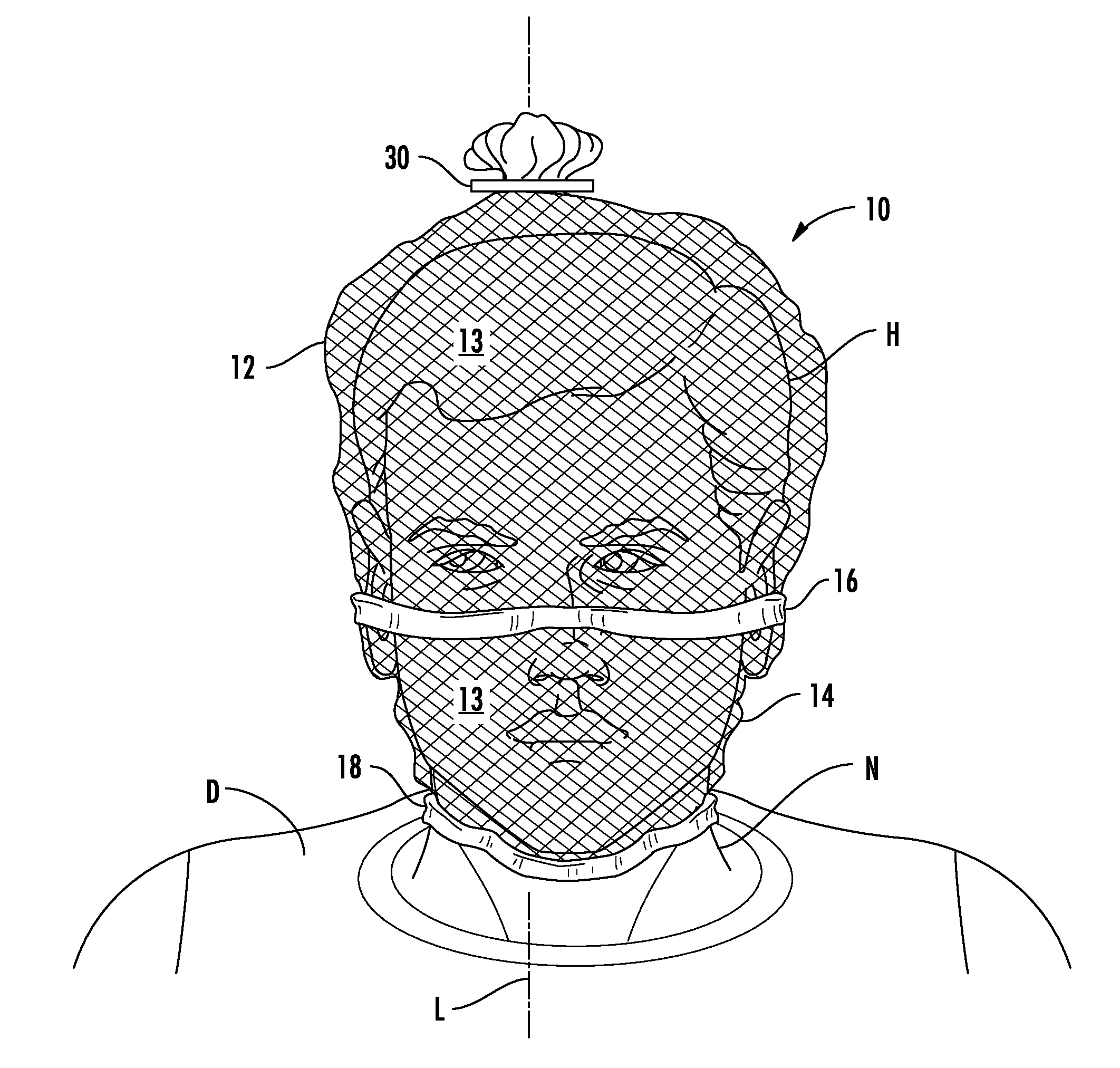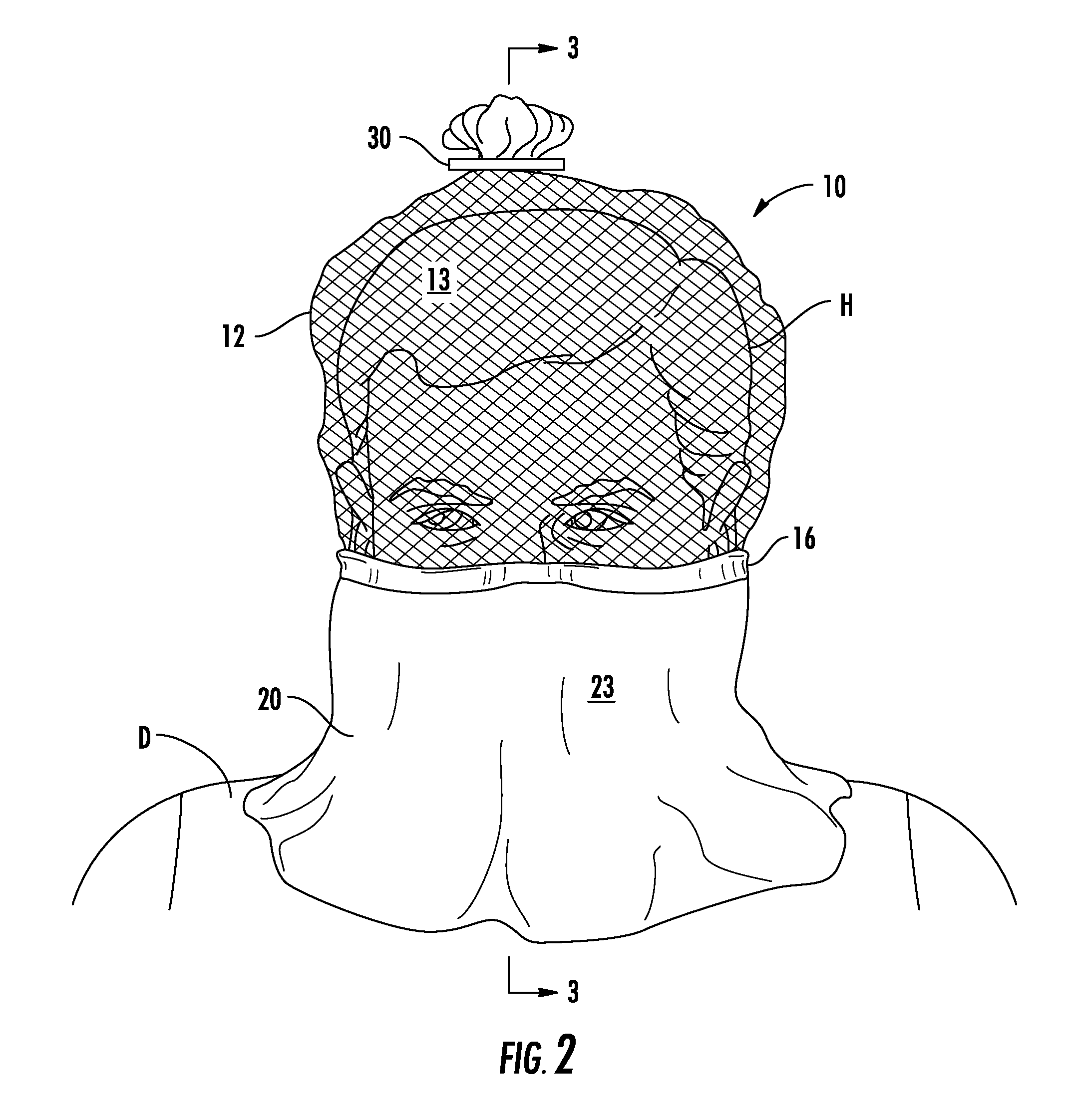Transport hood including skirt
a technology of transport hood and skirt, which is applied in the direction of protective garments, headwear caps, garment hoods, etc., can solve the problems of torn apart and difficult separation of the top and bottom portions, and achieve the effects of not easy to separate, avoid potential discomfort and/or breathing difficulty, and stretch easily
- Summary
- Abstract
- Description
- Claims
- Application Information
AI Technical Summary
Benefits of technology
Problems solved by technology
Method used
Image
Examples
Embodiment Construction
[0021]Referring now more specifically to the drawing figures, FIG. 1 is a front perspective view of a protective head covering, referred to herein as a transport hood, 10 according to the invention shown with a portion of the transport hood removed for purposes of clarity. The transport hood 10 is generally dome-shaped, and thus, is substantially symmetric about a longitudinal axis L. The transport hood 10 comprises a top portion 12 and a bottom portion 14. If desired, the top portion 12 and the bottom portion 14 may be formed as a single dome-shaped component. Alternatively, the top portion 12 and the bottom portion 14 may be formed as separate components and joined together. As shown in FIG. 1, a lowermost edge of the top portion 12 is joined to an uppermost edge of the bottom portion 14 by a first length of an elastic material 16 that extends around the circumference of the transport hood 10. Also as shown in FIG. 1, a second length of elastic material 18 extends around the circu...
PUM
 Login to View More
Login to View More Abstract
Description
Claims
Application Information
 Login to View More
Login to View More - R&D
- Intellectual Property
- Life Sciences
- Materials
- Tech Scout
- Unparalleled Data Quality
- Higher Quality Content
- 60% Fewer Hallucinations
Browse by: Latest US Patents, China's latest patents, Technical Efficacy Thesaurus, Application Domain, Technology Topic, Popular Technical Reports.
© 2025 PatSnap. All rights reserved.Legal|Privacy policy|Modern Slavery Act Transparency Statement|Sitemap|About US| Contact US: help@patsnap.com



